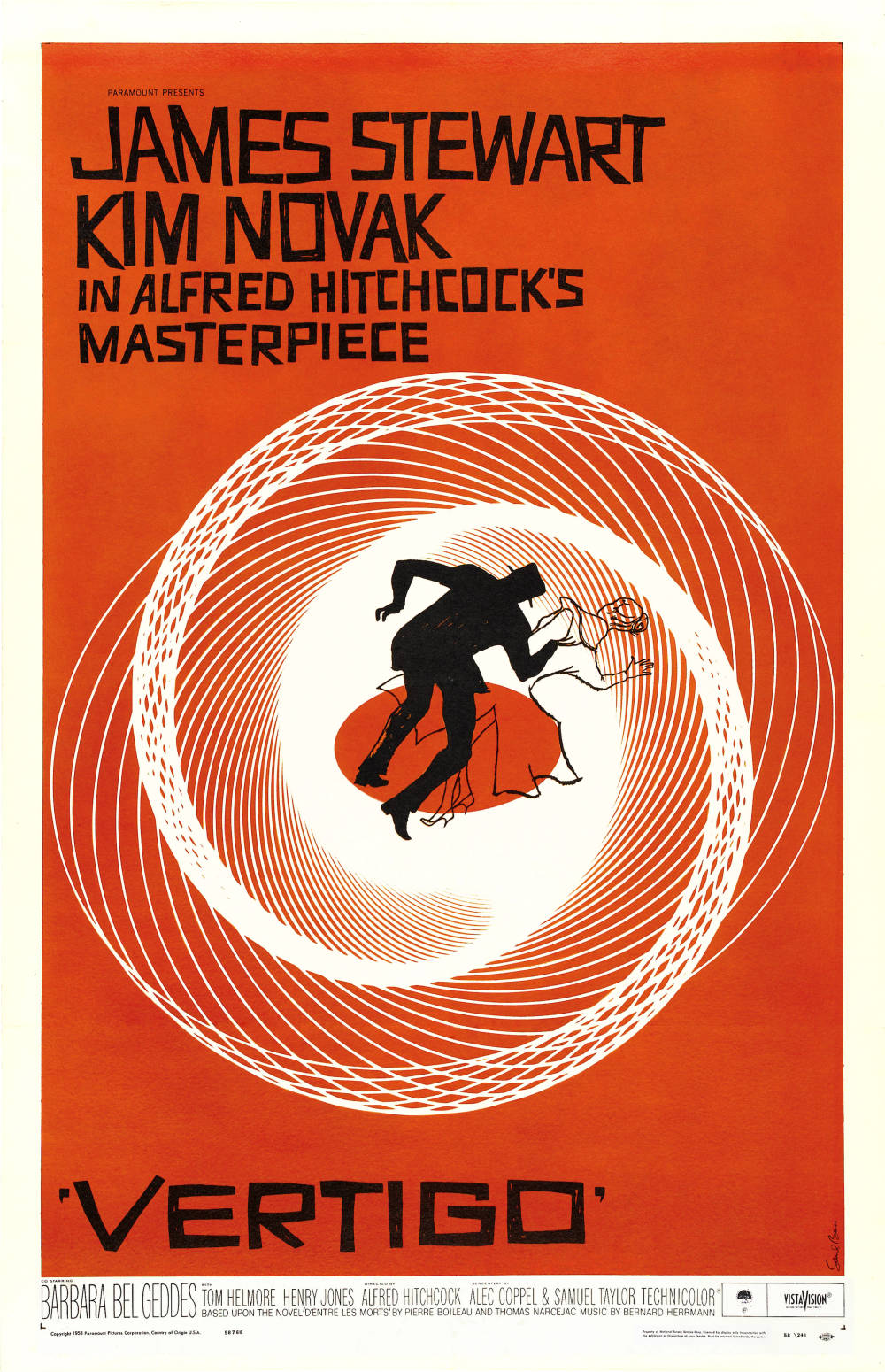
Jenny Holzer
Marquees, 1993

Jenny Holzer
Marquees, 1993
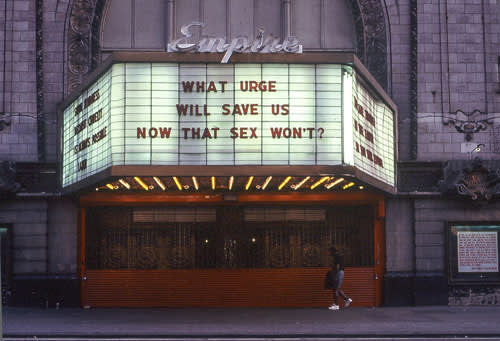
Jenny Holzer
Marquees, 1993
Though widely considered a relatively new innovation, the roots of cinema date back centuries. Throughout time, the moving picture — be it shadows on a cave wall, a hand-drawn flip book, or a spinning zoetrope—has been relished by audiences as a collective experience that transcends cultures and time. In the 1650s, Dutch physicist Christiaan Huygens invented the magic lantern, an early image projector using mirrors and lenses that was later adapted for entertainment purposes. The next and perhaps most notable development in film history came about 200 years later, when photographer Eadweard Muybridge was commissioned by Leland Stanford to prove that a galloping horse becomes fully airborne for a fraction of a second. In order to solve the puzzle, Muybridge had to overcome the long exposure time of 19th century cameras. Muybridge arranged 12 cameras in a row, each attached to a trip wire, in order to take rapid photos of a horse in motion. This technique was monumental in the development of stop-motion, animation, and eventually, the motion picture.
In 1895, the Lumière brothers invented the Cinématographe, a lightweight, relatively quiet, hand-powered mechanism that projected images at a rate of 16 frames per second. The invention was an improved version of Thomas Edison’s Kinescope, which was invented four years earlier. In the following year, the Lumière brothers made over 40 films and screened them at theaters in major cities around the world. Combined with the establishment of the first permanent movie theater in Buffalo, New York, the Cinématographe kick started the film industry into what it is today. In 1929, the Academy Awards were established, and by 1930, 3 out of 5 Americans went to the movies every week. The next three decades would become the “Golden Age of Hollywood,” producing such classics as The Wizard of Oz and Snow White and the Seven Dwarves, while introducing the world to stars like Cary Grant, Katharine Hepburn, and Marilyn Monroe.

Lumiere Brothers
First paid-for screening, 1895

The first Academy Awards
1929
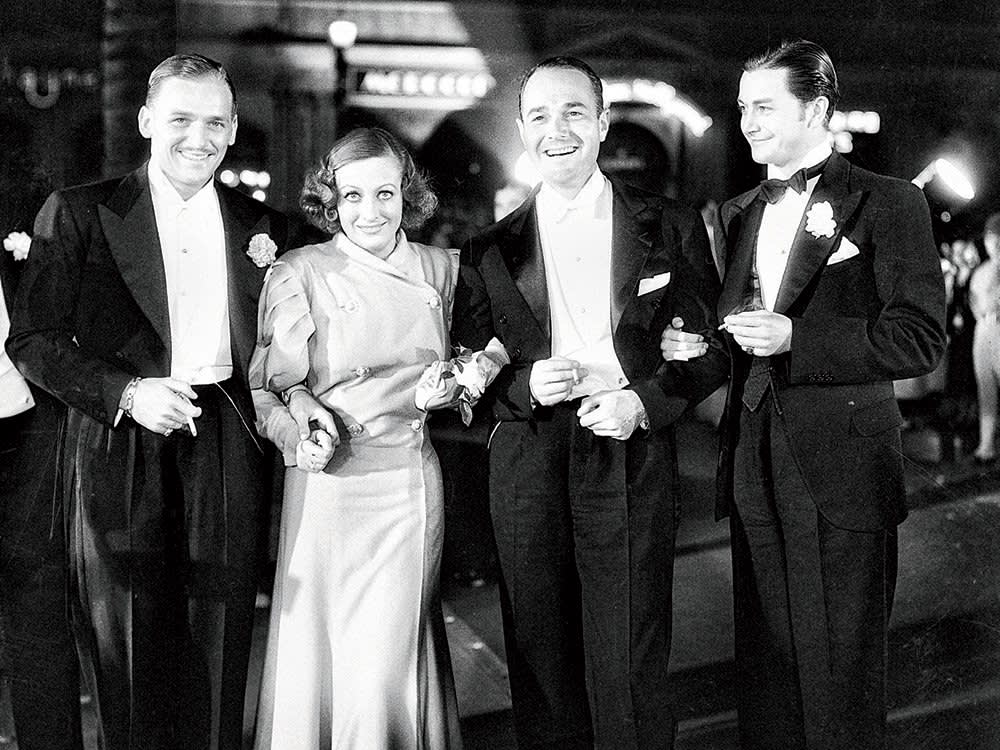
Douglas Fairbanks Jr., Joan Crawford, William Haines, and Robert Montgomery
After the first Academy Awards, 1929
The impact of film quickly spread throughout society, molding itself into an American tradition. Despite the hardships of the Great Depression, Americans went to the movies to find fantasy and escape their realities. The visual culture of film has had a lasting impact on society since its earliest moments both as a spectacle and a communal event involving fantasy, drama, and indulgence. As such, an appropriate space was necessary to facilitate the movie-going experience.
Before the casual, sticky-floored AMC Theaters that we know today, movie theaters were extravagant “dream palaces,” complete with decadent details. The first dream palace was the Mark Strand Theater in New York City’s Times Square neighborhood. The theater, which opened in 1914, sat 3,000 guests and featured a two-story rotunda that offered moviegoers a space to gather before shows and discuss their thoughts after. By 1916, America had over 21,000 dream palaces, with particular theaters gaining fame for their exquisite details. The Castro Theater, built in 1922 in San Francisco, featured a leatherette ceiling—a technique that creates the appearance of leather – while Rochester, New York’s Kodak Hall boasted a 35-foot, 5,000 pound chandelier along with Maxfield Parrish’s Interlude painting, and The Majestic Theater in San Antonio, built in 1929, gained fame for its size and ornate design.
Perhaps the most iconic of the dream palaces were Sidney Grauman’s Hollywood theaters. Grauman’s Egyptian Theatre, which took advantage of the revival of Egyptian art and architecture, became a fixture of the Golden Age of Hollywood. Following its success, Grauman opened the Chinese Theatre with architect Raymond Kennedy, which features a 90-foot entrance framed by wrought iron dragons, as well as temple bells, pagodas, and stone Heaven Dogs brought in from China. The theater still stands today on Hollywood Boulevard and has become the neighborhood’s most sought-after location for premiers.

Mark Strand Theatre
New York City, Interior Postcard, 1914
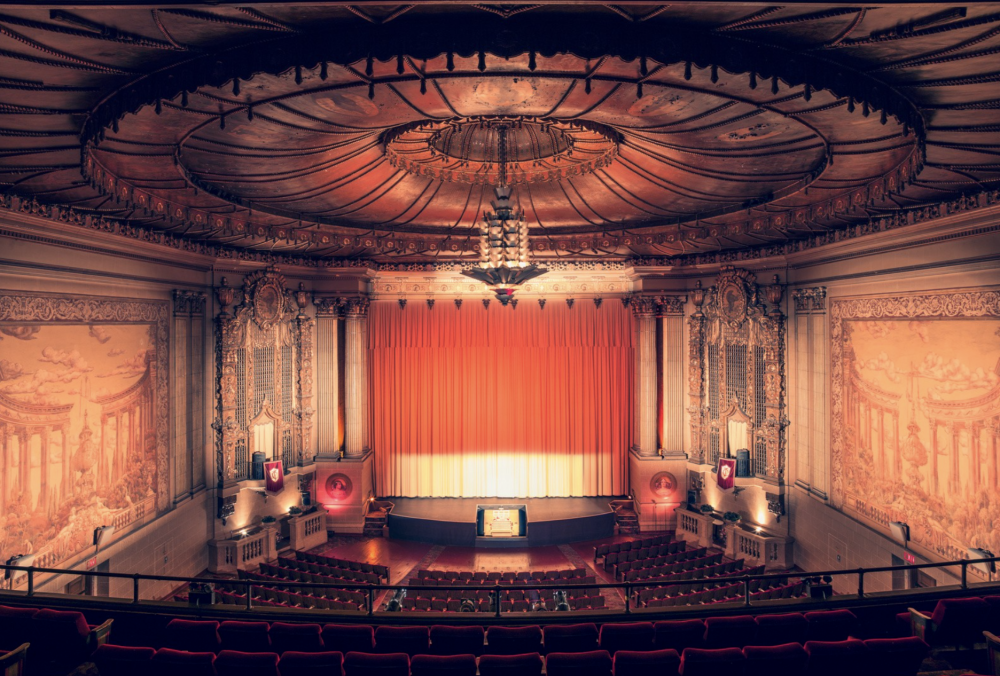
Castro Theatre
Interior, San Francisco, 1922

Kodak Hall Theatre
Rochester, New York, 1922

The Majestic Theater
San Antonio, Texas, 1929

Meyer and Holler
Grauman's Egyptian Theater, 1922

Raymond Kennedy
Grauman's Chinese Theatre, 1927
Prominent architects, too, have donated their skills towards the creation of cinematic spaces. Frank Gehry’s Cinémathèque Française Film Center and Museum, located in Paris, holds documents, archives, and objects relating to film. The building’s surreal curves and brutalist structure stand in contrast with one another, making for an eye-catching site amongst the city’s neoclassical facades. Similarly, Architect Renzo Piano built the Fondation Jérôme Seydoux-Pathé in the French capital as a space dedicated to the promotion and preservation of French cinema. Piano understands the relevance of cinema to architecture, stating that “Making architecture is like making cinema. Both are about combining technology and practicality with things that belong to the imagination. And both require an army of people with ideas coming from all sides.” Decades prior, Theater Neelam, located in Chandigarh, India, was built by city planner Le Corbusier shortly after India gained independence. The modernist structure, designed by architect Aditya Prakash, still stands in its original form as a cultural hub for the screening of Bollywood movies.

Frank Gehry
Cinémathèque Française Film Center, Paris
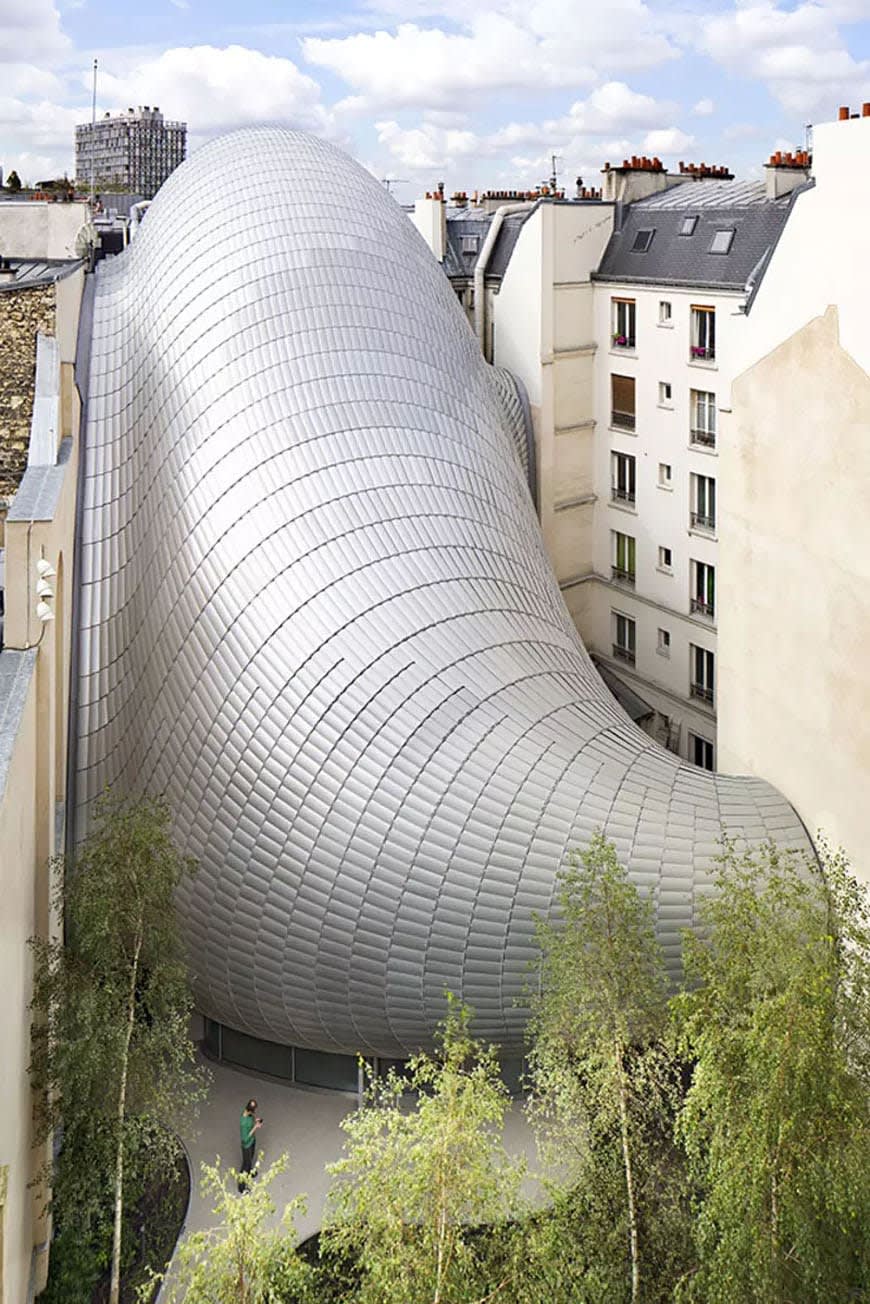
Renzo Piano
Fondation Jérôme Seydoux Pathé, Paris

Le Corbusier
Theater Neelam, Chandigarh, India

Le Corbusier
Theater Neelam, Chandigarh, India
In addition to the construction of theaters as a space for viewing films, countless individuals have come up with innovative designs for practical use within the theater environment. In the late 1800s, American playwright and inventor Steele MacKaye patented the folding theater chair, along with the fire curtain and the double-stage system; the former of which was further developed by Italian architect Carlo Mollino, who designed theater armchairs throughout the 1950s. Made from brass and finished with red velvet upholstery, Mollino’s seating design gave birth to the iconic theater seats that we know today. Though little to no attention is given to a cinema’s design when entering a dark theater to watch a movie, the work of these inventors has completely transformed the way we experience films.

Steele MacKaye
Folding Theatre Chair, 1800s

Carlo Mollino
Theatre Armchairs, 1951

Carlo Mollino
Theatre Armchairs, 1951

Carlo Mollino
RAI Auditorium, 1951

Carlo Mollino
Theatre Armchairs, at Teatro Regio, 1967
Since the beginning of performance, clothing has always been an important mode of storytelling. From the courtly masques of the 16th century to the Ballet Russes in Paris, costume contributes to and expands narrative, giving the viewer a glimpse into a character’s inner thoughts and feelings. Considered as important as directors and writers to a film’s success, costume designers became essential to creating a visual culture that entranced audiences, as well as creating fashionable icons out of the beauties gracing the silver screen.
Perhaps the most famous costume designer of Hollywood’s Golden Era, Edith Head worked at Paramount Pictures for 43 years, winning multiple Academy Awards for her work. Head was especially known for her extensive consultation with her subjects, perhaps the reason why her designs became symbolic of specific actresses. Some of her most famous designs include Mae West’s glamorous gown from She Done Him Wrong (1933), Bette Davis’ sophisticated ensembles from All About Eve (1950), and Tippi Hedren’s green suit from The Birds (1963). Head left Paramount for Universal Studios in 1967, possibly to bolster her successful collaborations with Alfred Hitchcock. Today, Edith Head’s iconic hair and glasses live on in the public memory through Edna Mode, a fictional designer in Pixar’s 2004 film, The Incredibles. Another widely recognized costume designer of the Golden Age was Gilbert Adrian, known simply as Adrian, who created costumes for hundreds of Metro-Goldwyn-Mayer films between 1928 and 1941, most famously The Wizard of Oz. Adrian was known for bringing high fashion to the silver screen, effectively blurring the line between costume design and fashion, and thus between fashion and art.
Edith Head
Portrait with Oscars
Edith Head
Mae West in She Done Him Wrong, 1933
Edith Head
Bette Davis in All About Eve, 1950
Edith Head
Tippi Hedren in The Birds, 1963
Edna Mode
Inspired by Edith Head, The Incredibles, 2004
Gilbert Adrian
Portrait
Gilbert Adrian
The Wizard of Oz, Dorothy Costume
Today’s costume designers use innovative techniques to both capture the period and theme of a film, and to incorporate modern designs and technologies. British costume designer Sandy Powell did an excellent job at doing so for Yorgo Lanthimos’ 2018 film The Favourite. Set in the early 18th century, Powell smartly created period-appropriate costumes by utilizing modern and inexpensive materials such as denim, as well as 3D-printed lace accents, that fit perfectly amongst Lanthimos’ bizarre script and surreal film techniques. Likewise, Milena Canonero, who has collaborated with the likes of Stanley Kubrick and Wes Anderson, masterfully evokes the style of the director in her designs. Her work for Anderson’s The Grand Budapest Hotel perfectly captured the whimsical aesthetic of Anderson’s idiosyncratic style.
In addition to costume designers, films also utilized fruitful collaborations with fashion designers to bolster excitement. Hubert de Givenchy’s work with Audrey Hepburn has practically become synonymous with the actress herself; Hepburn’s iconic little black dress from Breakfast at Tiffany’s was designed by Givenchy, making Hepburn the brand’s first ambassador. Jean Paul Gaultier saw the benefits of such a collaboration, designing over 900 costumes for the 1997 film The Fifth Element, including the purple uniforms of the film’s cruise attendants, Chris Tucker’s leopard bodysuit, and Mila Jovovich’s white bandage ensemble. Other lasting collaborations include Coco Chanel for Last Year in Marienbad, Manolo Blahnik for Marie Antoinette, and Miuccia Prada for The Great Gatsby.

Sandy Powell
The Favourite, 2018

Sandy Powell
The Favourite, 2018

Milena Canonero
The Grand Budapest Hotel, 2014

Milena Canonero
The Grand Budapest Hotel, 2014

Hubert de Givenchy
‘Breakfast at Tiffany’s', 1961

Hubert de Givenchy
Breakfast at Tiffany’s, 1961

Jean Paul Gaultier
'The Fifth Element', 1997

Jean Paul Gaultier
The Fifth Element, 1997

Coco Chanel
Last Year in Marienbad, 1961
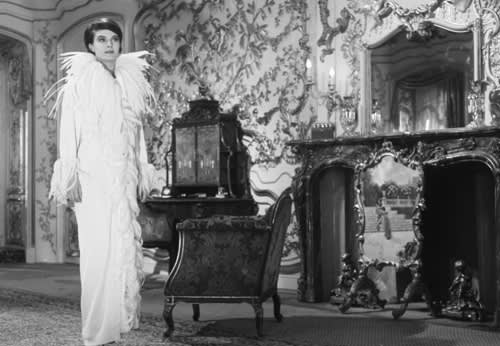
Coco Chanel
Last Year in Marienbad, 1961

Manolo Blahnik
Marie Antoinette, 2006

Miuccia Prada
The Great Gatsby, 2012
The relationship between film and fashion goes both ways. The medium of film - past and present - provides endless musings that have evidently been reflected on the runway. John Galliano’s Spring/Summer 1988 collection was heavily inspired by Vivien Leigh’s portrayal of Blanche Dubois from the film A Streetcar Named Desire, while Raf Simons is especially known for his passion for horror films, with collections referencing Jaws, Friday the Thirteenth, Rosemary’s Baby, and Carrie. Alexander McQueen’s Spring/Summer 1995 collection examines the relationship between film and fashion through Alfred Hitchock’s The Birds. With an obvious knowledge of Edith Head’s work on the film, McQueen leaned into the dark horror of the storyline with 60s-inspired silhouettes, feather detailing, and deconstructed garments. Known for his dramatic and sinister aesthetic, designer Gareth Pugh took inspiration from The Wicker Man for his Spring/Summer 2015 collection, which uses extravagant headpieces and natural materials to capture the picture’s unique brand of folk horror. It is clear that the collaboration between film and fashion is mutually beneficial; movies are an esteemed means of advertising for clothing brands as well as a source of inspiration for many designers, and clothing helps elevate films and their storylines.
John Galliano
Blanche Dubois from the A Streetcar Named Desire, 1988
John Galliano
Blanche Dubois from the A Streetcar Named Desire, 1988
Raf Simons for Calvin Klein
S/S 2019
Raf Simons for Calvin Klein
S/S 2019
Alexander McQueen
S/S 1995
Alexander McQueen
S/S 1995
Much like fashion, the art world is historically collaborative with cinema. Edward Hopper’s melancholy painting House by the Railroad provided inspiration for the Gothic farmhouse that housed Norman Bates in Alfred Hitchcock’s Psycho, while Hopper’s portrait of isolation in the urban space in Nighthawks was a point of reference for Ridley Scott’s 1982 sci-fi film, Blade Runner. Likewise, Stephen Spielberg took inspiration from the muted landscapes of painter Andrew Wyeth for the lengthy scenery shots in Jaws. Combining art, fashion, and film, Stanley Kubrick studied the 18th century paintings of William Hogarth in order to accurately portray costumes in the 1975 film Barry Lyndon. Meanwhile, bar sequences in Martin Scorsese’s Mean Streets were inspired by the Italian painter Caravaggio, linking The Calling of St Matthew with the gritty streets of New York.
In a different respect, some artists have used their work to comment on the various tropes commonly found in film. Photographer Cindy Sherman’s Untitled Film Stills from 1977-1980 saw the artist posing as various female character tropes that are embedded in our culture. Sherman replicated film stars of the Golden Era, complete with 1950s-esque costuming and dramatic off-screen gazes. In staging, posing, and photographing these roles, Sherman inserts herself into a constructed narrative, commenting on femininity and identity within the larger cultural phenomenon of cinema.

Edward Hopper
House by The Railroad, 1925

Alfred Hitchcock
House from Psycho, 1960

Edward Hopper
Nighthawks, 1942

Ridley Scott
Blade Runner, 1982

William Hogarth
Tavern Scene, 1735

William Hogarth
The Tête à Tête, 1743

Stanley Kubrick
Barry Lyndon, 1975

Stanley Kubrick
Barry Lyndon, 1975

Caravaggio
The Calling of Saint Matthew, 1600

Martin Scorsese
Mean Streets, 1973

Cindy Sherman
Untitled Film Stills, 1977-1980

Cindy Sherman
Untitled Film Stills, 1977-1980

Cindy Sherman
Untitled Film Stills, 1977-1980
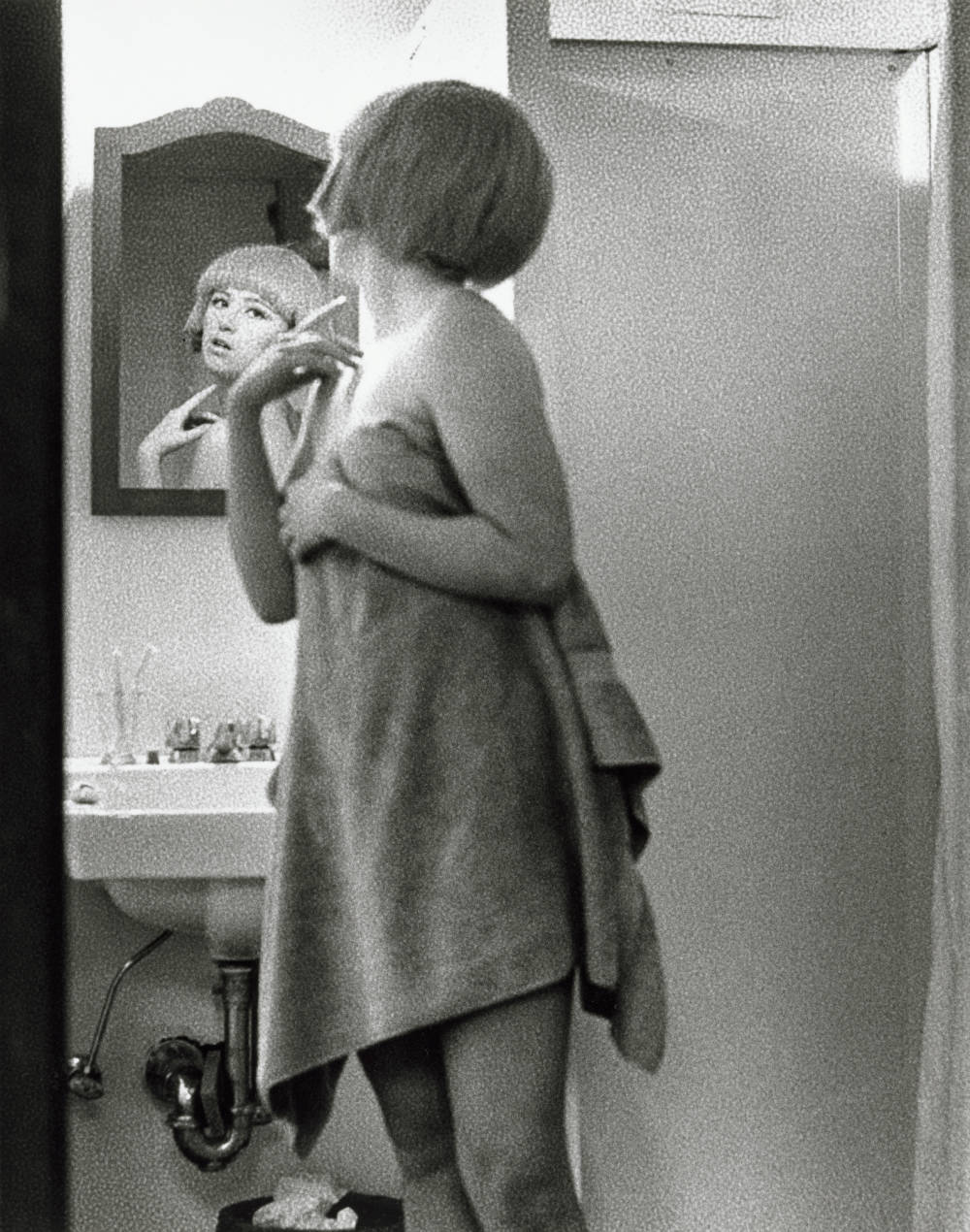
Cindy Sherman
Untitled Film Stills, 1977-1980
Many artists see the link between the motion picture and art, and have taken to the medium themselves, creating multimedia works that use technology to transcend the limitations of painting and sculpture. For Andy Warhol, film was a new age, avant-garde form of art making. Warhol would go on to direct and produce hundreds of movies throughout his career, which blended the commercial with the experimental. Screen Tests, Warhol’s most prolific cinematic project, celebrated various artists and celebrities, eternalizing pop culture of the 1960s. In Vinyl, Warhol adapted the novel A Clockwork Orange, while Chelsea Girls presents the happenings of New York’s Chelsea Hotel in the 1960s. In addition to breaking the medium, Warhol’s films also propelled starlets like Edie Sedgwick to fame.
While Warhol has always been the king of multimedia, other artists have departed from their mediums to see breakout film efforts. Artist Harmony Korine and photographer Larry Clark’s polarizing 1995 film Kids utilized the primary subjects of the latter artist’s original work—teenagers— while adding further storyline through motion picture.
Andy Warhol
Screen Tests, 1964-1966
Andy Warhol
Screen Tests, 1964-1966
Andy Warhol
Screen Tests, 1964-1966
Andy Warhol
Screen Tests, 1964-1966
Andy Warhol
Vinyl, 1965
Andy Warhol
Chelsea Girls, 1970
Larry Clark and Harmonie Korine
Kids, 1995
Decades before Clark and Korine, and even prior to Warhol, French-American painter and sculptor Marcel Duchamp was one of the first artists to experiment with film, creating Anémic Cinéma in the 1920s. In collaboration with surrealist photographer Man Ray, Duchamp’s film featured spinning hypnotic disks, affixed with puns written in French, captivating audiences in a suspiciously similar manner to the opening sequence of Hitchcock’s Vertigo, which premiered four decades later. In this way, and countless others, film and art link back to one another, providing endless sources of visual inspiration, means of storytelling, and subject matter for either field to commandeer.
Unlike art, architecture, or fashion, film is a relatively new invention. Still, it has rapidly become a crucial part of contemporary culture. Film goes beyond entertainment: it is an escapist fantasy, an artistic expression, an intellectual stimulant, and a social activity that will continue to grow and develop for centuries to come.

Marcel Duchamp
Anémic Cinéma, 1920
